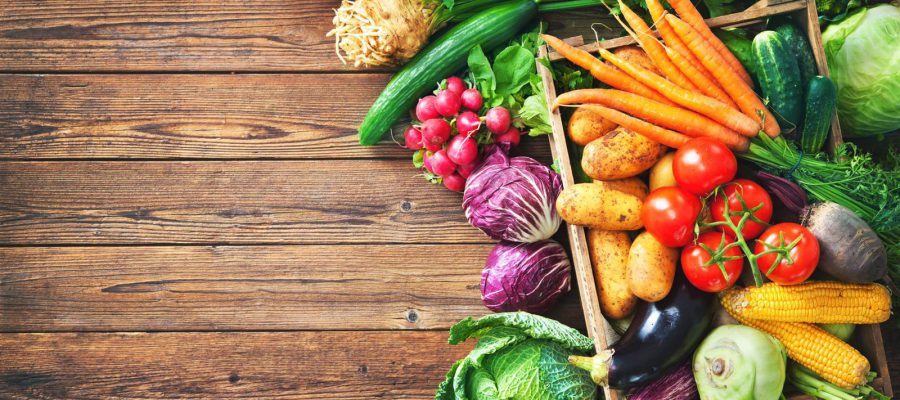A healthy lifestyle includes physical activity, sleep, and of course, good food. We need to put into our bodies the essential nutrients we need to remain strong, maintain our memory, feel good, and fight disease. Here are some tips regarding what to eat and the health benefits of each food category.
Nutrient-dense and colorful fruits and vegetables
Phytonutrients are the cause of color in fruits and vegetables. These are naturalchemicals that help protect plants from germs, bugs, the sun’s harmful rays, and other threats. Each color indicates an abundance of specific nutrients. Our bodies benefit from consuming a variety of these foods. Specifically, consuming a “rainbow” of colorful
and natural foods will ensure optimal health. For example, dark leafy greens are high in fiber, folate, carotenoids, and contain vitamins C and K, iron, and calcium. Dark green vegetables also act as antioxidants in the body. Types of dark greens include:
- Broccoli
- Kale
- Romaine Lettuce
- Asparagus
- Zucchini
- Kiwi fruit
- Avocado
- Green apples
- Green grapes
- Peas
Red fruits and vegetables help fight Cancer, reduce the risk of Diabetes and Heart Disease, and improve skin quality. Orange and yellow fruits and vegetables are full of vitamin C and carotenoids, including beta-carotene. Orange and yellow foods also help increase blood flow and may reduce your risk of stroke. Examples of red and yellow foods include:
- Oranges
- Grapefruit
- Lemons
- Corn
- Sweet potatoes
- Winter squash
- Peaches
- Red peppers
- Tomatoes
- Strawberries
- Raspberries
- Watermelon
- Beets
- Red Onions
These are a just a few examples of the benefits of eating a variety of whole fruits and vegetables. Other colors include blues and purples, and white and brown—the more diverse your plate, the more significant the benefit to your health.
Whole grains and beans
When balancing a healthy diet, incorporate whole grains such as wheat and oats. Beans are an inexpensive source of protein, fiber, carbohydrates, and micronutrients, including folate. Beans are also rich in antioxidants—more so than many fruits and vegetables. Consumption of whole grains improves diet, weight management, and
gastrointestinal health. They also reduce the risk of Cardiovascular Disease and Type 2 Diabetes. Both beans and grains are incomplete proteins, meaning they each lack some essential amino acids. However, when paired together, they are a delicious complement
(between taste and nutrition) and can take the place of animal proteins.
Mixing different types of grains and beans adds diversity to your plate. Grains such as quinoa, barley, amaranth, and buckwheat all have their subtle tastes and textures. Combining different flavors into your meal is a fun way to incorporate their benefits into your diet. In particular, mix them into salads or a main dish, or create hot and cold side dishes. Many of them are also tasty pureed (hummus or dip), roasted, and baked.
Lean proteins (meat, poultry, seafood, beans, eggs, nuts)
Did you know that “older adults need to eat more protein-rich foods when losing weight, dealing with a chronic or acute illness, or facing a hospitalization?” An article from Kaiser Health states that during stressful periods in our life, “aging bodies process protein less efficiently and need more of it to maintain muscle mass and strength, bone health and other essential physiological functions.” Protein becomes much more critical during life events in an older adult’s life, mainly if they do not use their muscles because of a disability or surgery.
What types of protein are suitable to consume? The answer is that protein in all forms is adequate. In particular, animal proteins contain all the necessary amino acids human bodies need to function well, and dietitians recommend that some sort of animal protein
be in our diets. As for red meats, make sure they are lean and not consumed too often.
Additional Nutritional Advice for Older Adults
As with most things in life, we need to adjust our eating habits as we age. However, some of these tips are helpful to incorporate at a younger age so that we can reap the health benefits as we get older.
- Add flavor to foods with spices and herbs instead of salt and look for low sodium packaged foods
- Add sliced fruits and vegetables to your meals and snacks. Look for pre-sliced fruits and vegetables on sale if slicing and chopping is a challenge
- Ask your doctor to suggest other options if your medications affect your appetite or change your desire to eat
- Drink 3 cups of fat-free or low-fat milk throughout the day. If you cannot tolerate milk try small amounts of yogurt, buttermilk, hard cheese, or lactose-free foods
- Drink water instead of sugary drinks
- Consume foods fortified with vitamin B12, such as fortified cereals
These recommendations may feel like a lot of information regarding healthy eating, but do not feel overwhelmed. Start small by making gradual changes to your diet and meals to meet best practices for your health. Soon, you will get used to eating smarter and healthier, and most probably, absolutely love the change.
Sources include:
Food Revolution Network
USDA Choose My Plate
Today’s Dietitian: Magazine for Nutrition Professionals
Kaiser Health News




